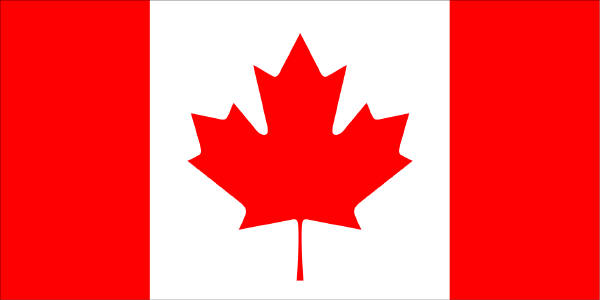
_svg.png)

_svg.png)
TWICE AS FAR
SWISSAIR 111
CRASH INVESTIGATION
![]()
![]()
![]()
- FRICTION -
THE NEW YORK CONNECTION
DUSTBALLS AND FILINGS
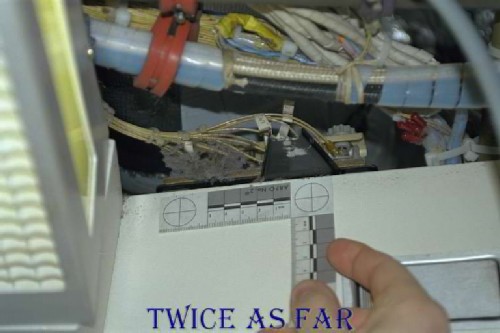
During the trips to Zurich, one of the many things that was looked for was the accumulation of dust and debris in various locations in the forward portion of the aircraft. This was not only for health purposes but depending on what it was and where, it could have been a factor in the cause of the fire. During the aircraft inspections, dust was found in several areas, but it was not of a significant amount, and certainly not a contributing factor with regards to the fire cause. However, most important, it was too small an amount to be part of the fire load and thus influence the fire.
This photo shows an accumulation of dust just above the forward hatch at the cockpit door on the G1 galley side. It is the left rear corner of the hatch. This area cannot be maintained by the normal cleaning crews as they are not to open hatches such as this. So it becomes the responsibility of the maintenance people when the aircraft is scheduled for any maintenance check.
This photo shows dust accumulated above the G3 galley, the left forward galley just ahead of the 1.1 or left forward door. Again it is not much, but it shows a lack of proper cleaning procedures as this area is part of the cleaning staff's responsibility. Given sufficient build-up, it could cause a problem. However, it was below the ceiling tiles and thus not part of the fire area that was on Vaud.
This photo shows the same area on the same aircraft. The unfastened wire holder can be seen in both photos. The major problem in this area is that the bolt that is seen just left of centre is too long. It protruded against the insulated wire above it. Over time with routine vibration, it could wear through the insulation, and cause a short. Before this plane left the maintenance hangar, the bolt was changed. Its original placement had been by another maintenance company and not by SR Technics.
This photo shows one of the worst examples of dust that was found above the ceiling of the Swissair MD-11 aircraft. Elsewhere, it was a minor amount on some of the ducts. However, this would not have contributed to the fire load, and it was not sufficient to cause the melting of aluminium.
| ------------ SITE MAP ------------ |
* * * * * * * * * * * *
THE NEW YORK TRIP REPORT
Now that this dust has been shown to have been so minimal as to be insufficient to contribute to the fire load in the aircraft,
here is the New York Trip report written by Cpl London that was forwarded to Inspector Lathem.
At the time of the meeting in New York,
these photos showing the dust were available for London to see,
and if he had discussed his proposed agenda,
they would have been provided to him.
As for his memo,
it is sufficient here to say that the author of that report
had no knowledge or understanding of the aircraft
and knew nothing about fires.
That lack of knowledge included the initiation of a fire,
the fire load, heat release, smoke, and lethal gas generation,
and what was and was not flammable on the aircraft.
As it turned out,
no one involved with the investigation
outside of Dr. Lyon and his immediate FAA Burn Center team
had a complete understanding of all of these factors,
and that included me.
However Garstang and I
both had a considerable background in fire cause determination and progression.
I had serious concerns about the cause of the fire
and the amount of flammable materials available for the fire.
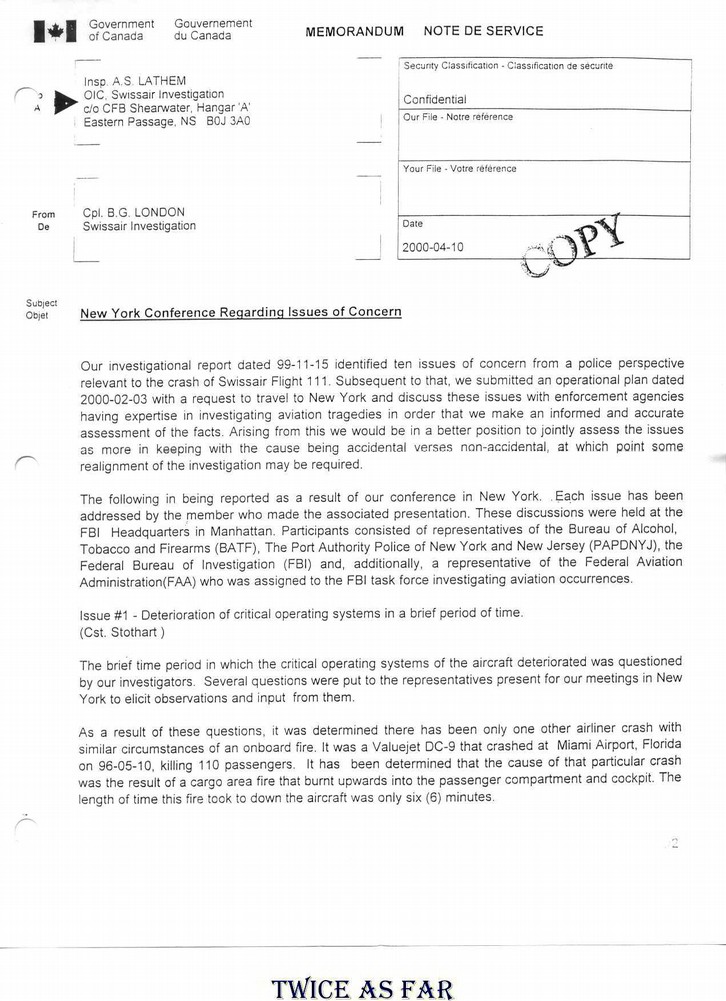
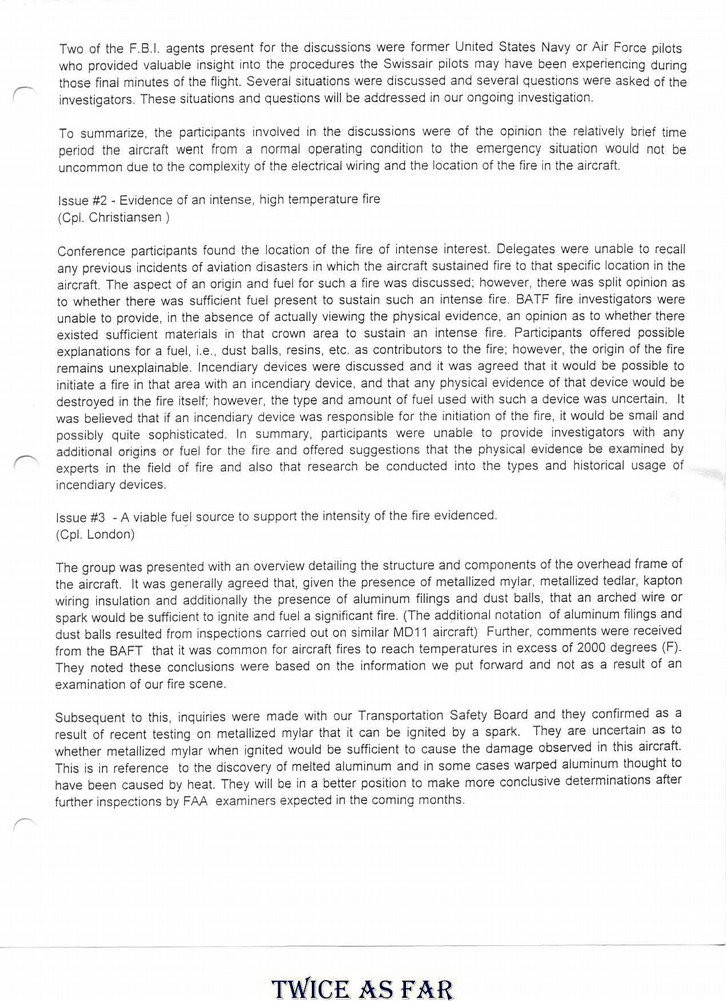
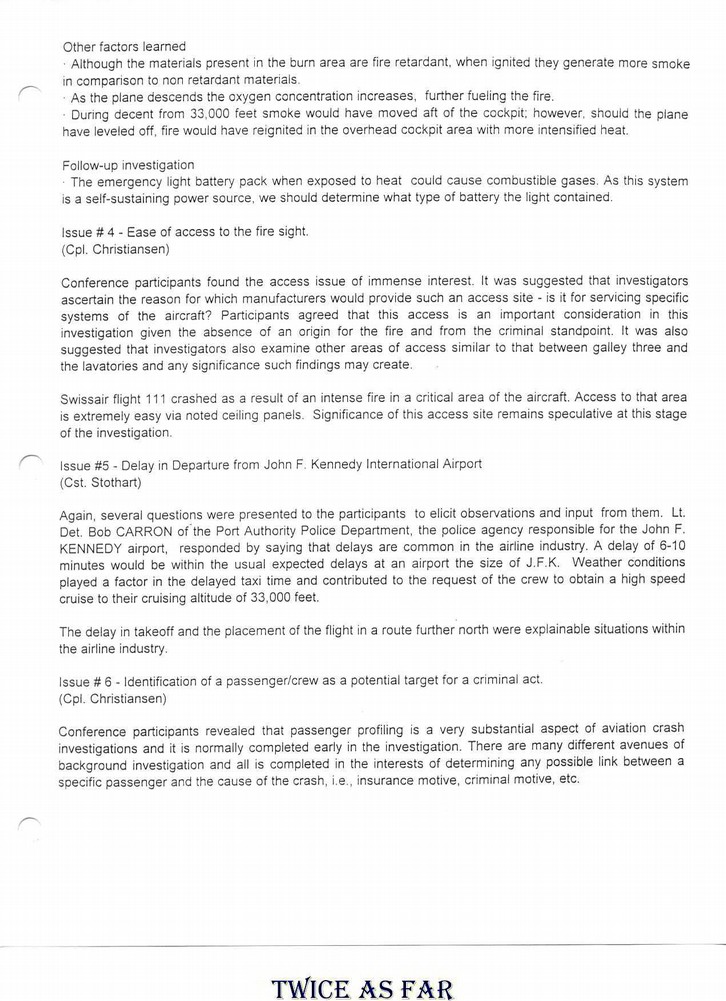
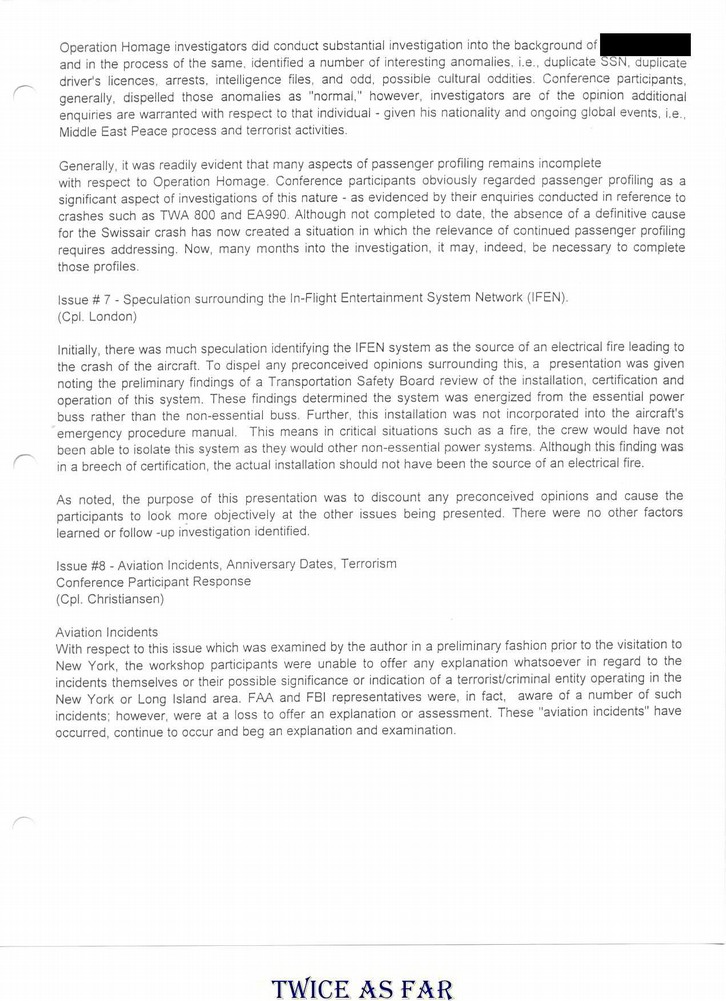
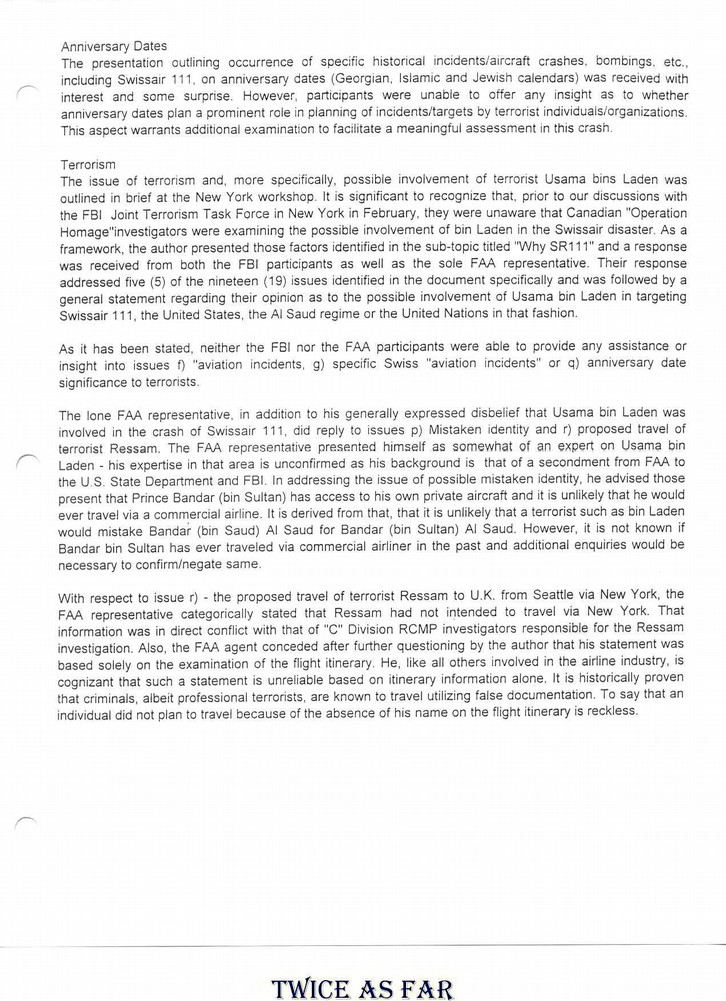
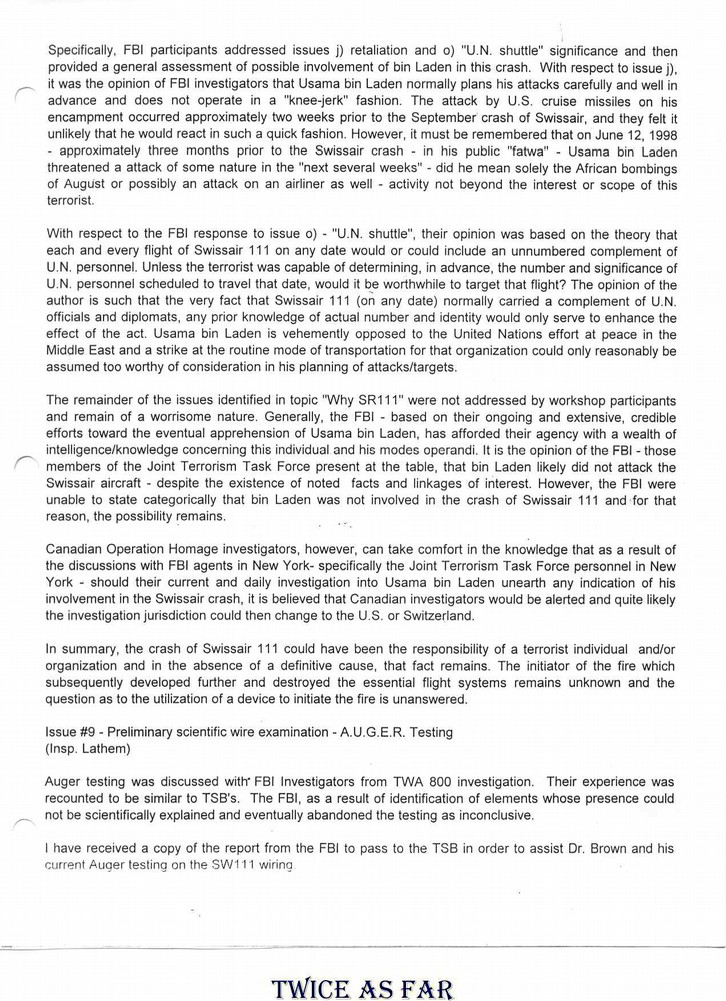
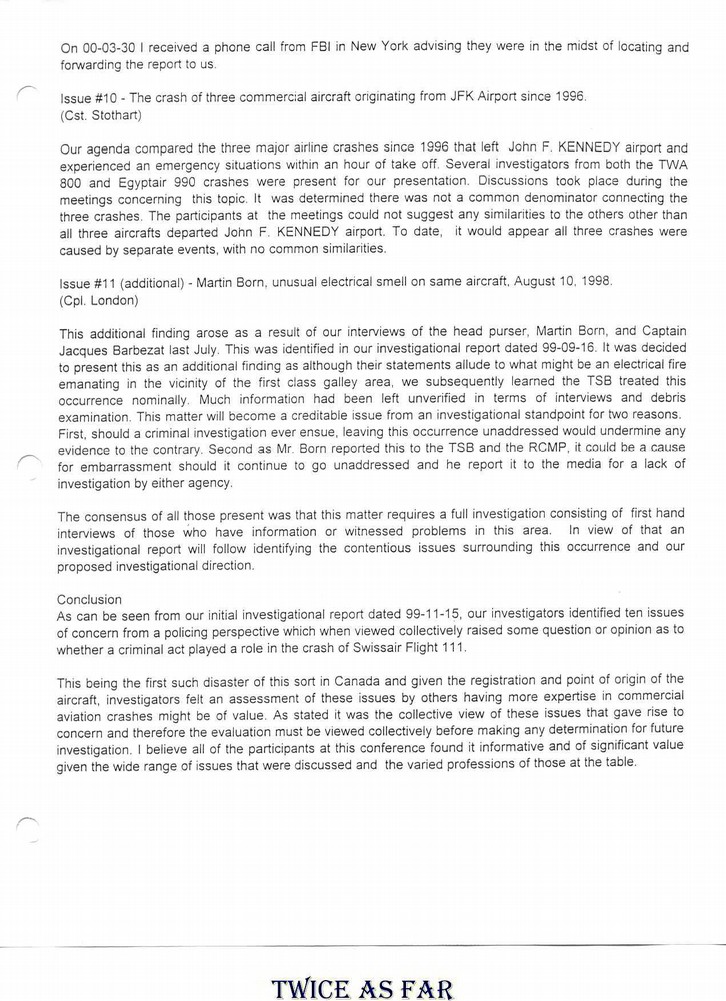
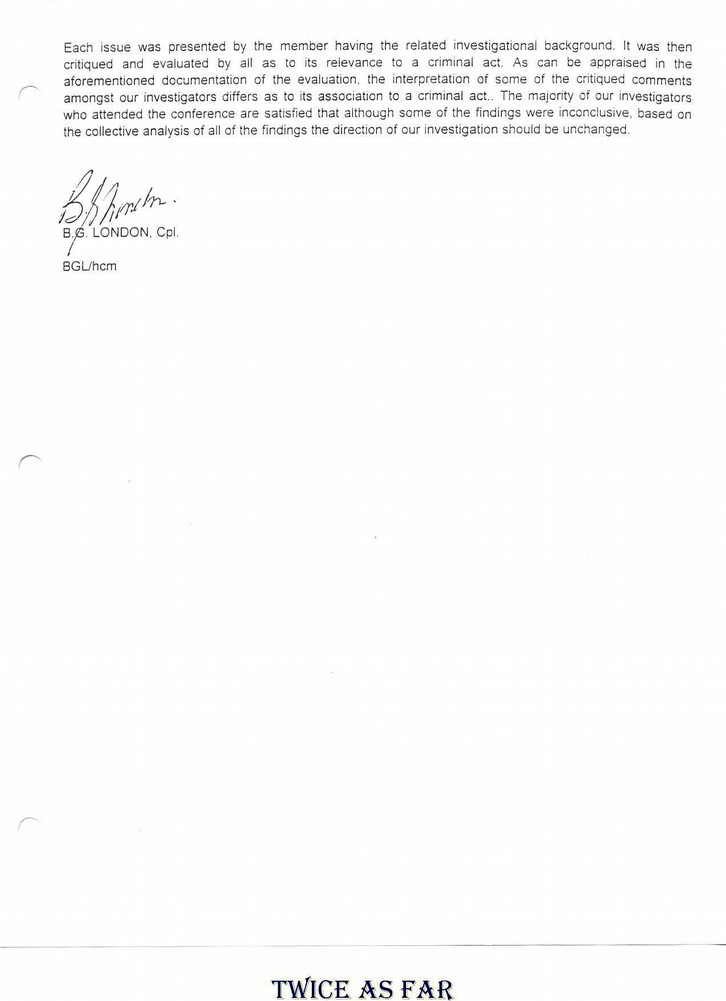
| ------------ SITE MAP ------------ |
* * * * * * * * * * * *
LATHEM'S REPORT TO DUNCAN
The following is Lathem's memo to Duncan regarding the New York trip.
Some of the details concerning who wrote the memos and when they were written
made me question the underlying purpose for the memos.
The details in the memos and how the whole process was manipulated and controlled
made me believe that it was all a preconceived plan to shut down the file.
It seems that both memos were prepared in a manner
to eliminate any concerns raised in the New York meeting,
and were intended to provide the RCMP's management
with reference memos to attenuate any questions at a later date.
What is important is that Lathem, at this time, knew of the AES findings,
and of Dr. Brown's three possible scenarios.
He knew of the concern regarding the lack of a fire load versus the excessive heat damage.
He knew of my opinion as an RCMP crime scene investigator,
and as a police officer investigating this file.
What was discussed at the New York meeting
should have had no influence on this file as a criminal investigation.
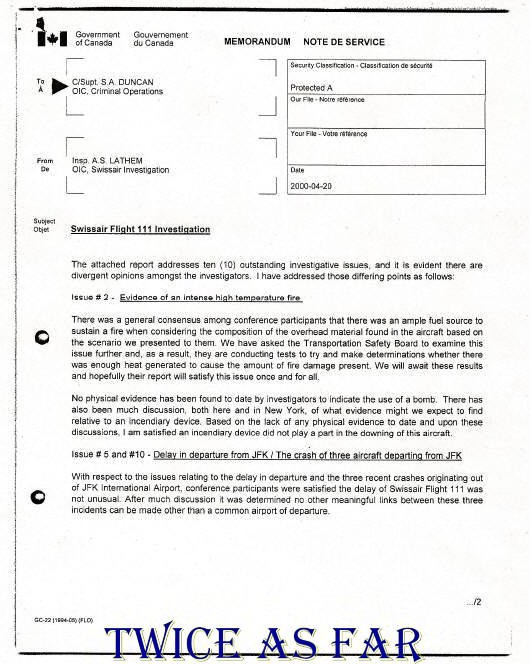
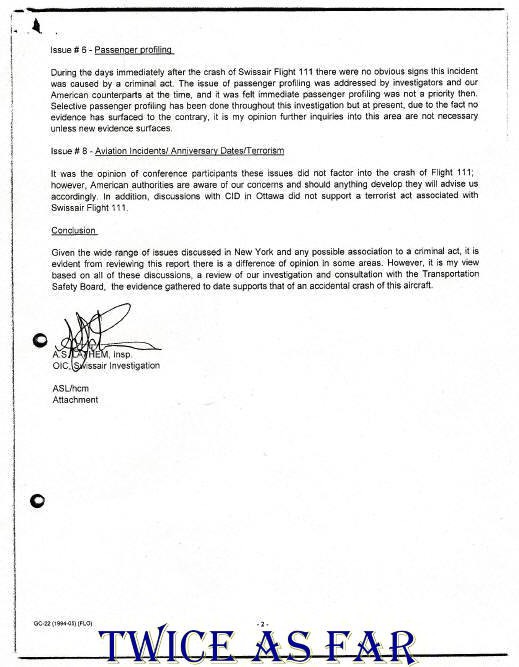
| ------------ SITE MAP ------------ |
* * * * * * * * * * * *
DUNCAN - ROGERSON FINANCE MEMO
This is a copy of the memo from Chief Superintendent Duncan
to Chief Superintendent Rogerson of the Finance Branch, Corporate Management, Headquarters, Ottawa.
Note the date on this memo.
It was written before Lathem submitted his memo to Duncan recommending the closure of the investigation.
This memo shows the link to the Commissioner's office.
For something this large, a C/Supt. would not have the final say.
Instead, it would have to go to the highest levels within the Force.
That, of course, was the Commissioner,
especially if a funding application to the Treasure Board was to be considered.
The three points raised in the memo are false.
At the time he wrote this memo,
Duncan had reasonable knowledge that Dr. Brown had located suspicious physical evidence during his examinations,
and he understood what the implications were of that evidence.
What's more, since I was a member of the RCMP and I knew of it
his three statements were invalid.
The handwriting is Lathem's
and it indicates that he received this memo from Duncan's office on the 31st of March, 2000,
four days after it was written.
At the time such correspondence would have been on paper,
and it would have been sent through the internal mail system.
It would not have been sent electronically as would be the case today.
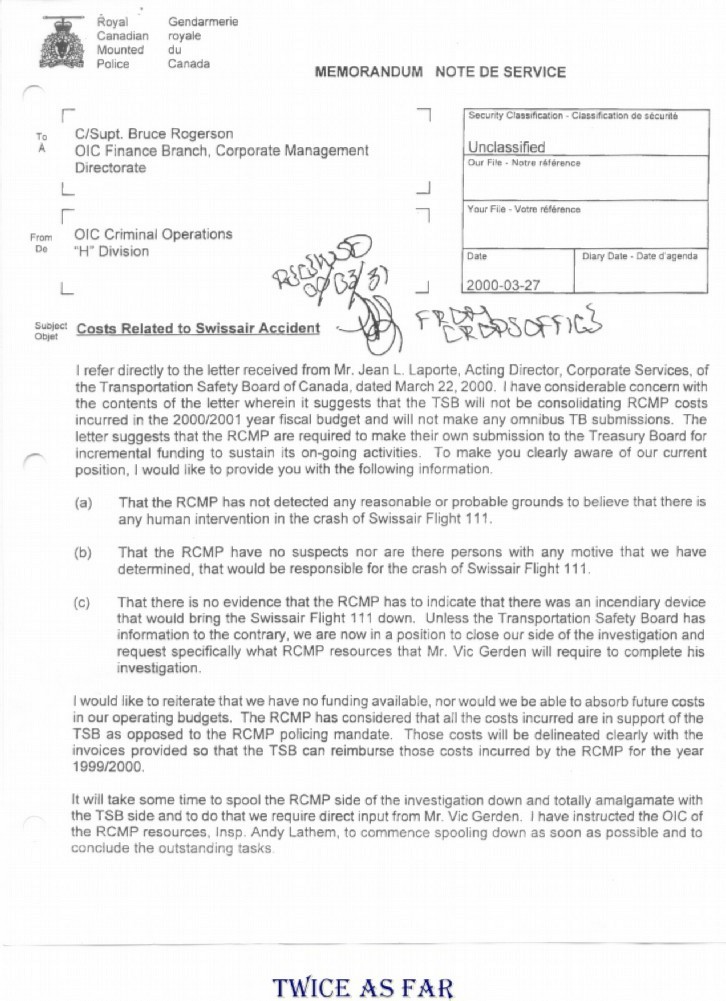
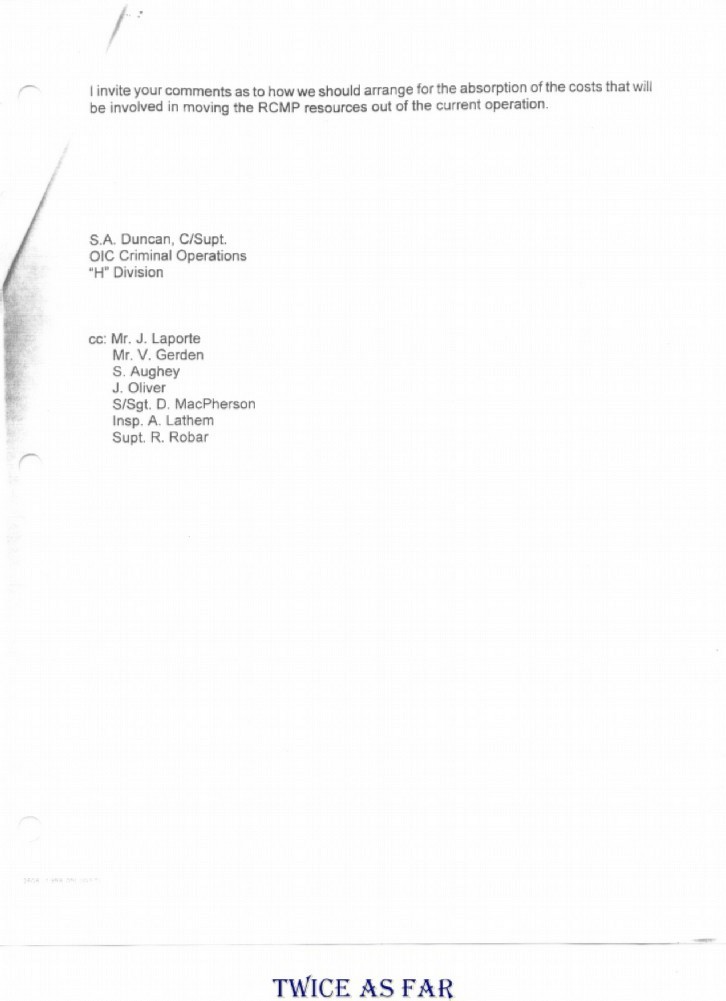
| ------------ SITE MAP ------------ |
* * * * * * * * * * * *
QUALIFICATIONS
FOR COURT PRESENTATION OF EXPERT EVIDENCE
SGT. THOMAS C. JUBY
ROYAL CANADIAN MOUNTED POLICE
- FINGERPRINTS, PHOTOGRAPHS, VIDEO, AND SKETCHES -
- Regular Member of the R.C.M.P. since 70 SEP 01
- Successfully completed six-month basic training that included approximately 10 hours
of fingerprint theory and practical work.
- Approx. 4.5 yrs of general duty work at Terrace, Bella Coola, and Prince Rupert, B.C.
During that time, numerous crime scenes were attended with Ident members for the purpose of
fingerprint and physical evidence examination.
- 75 APR, successfully completed a three-week Ident course at the Prince Rupert Forensic Identification Section.
- 75 OCT/DEC, successfully completed an eight-week course in Ottawa called the
"Identification Methods and Techniques Course".
This is the basic RCMP Forensic Identification Course, with international status in the Science of Fingerprint Study.
It dealt with fingerprints, photography, physical comparisons, and crime scene examination.
- 76 JAN, commenced and successfully completed a one year Forensic Identification understudy program
at the Prince Rupert Forensic Identification Section.
- 77 JUN, successfully completed a three week survey course at Carleton University, Ottawa.
This course dealt with the use of the survey transit for scene measurements and construction of plan drawings.
- 77 AUG, transferred to the Forensic Identification Section, Bathurst, N.B.
- 78 JAN 19, declared a fingerprint examiner under Sec 594 of the Criminal Code of Canada.
- 78 JUN, attended a two week Maritime Forensic Identification Seminar at Fredericton, N.B.
dealing with fingerprints and physical evidence collection and examination.
- 80 MAY, successfully completed a certification examination (theory and practical)
as part of the RCMP Forensic Identification requirements.
- 82 JUN, transferred to the Forensic Identification Section, Frobisher Bay (now Iqaluit), N.W.T.
- 82 SEP, attended a four-day Forensic Identification Seminar at Moncton, N.B.
dealing with fingerprint evidence and physical evidence at crime scenes.
- 83 MAR, attended a three-week Advanced Forensic Identification Course at the Canadian Police College, Ottawa.
This course dealt extensively with fingerprints and physical evidence collection and examination.
- 85 AUG, transferred to the Forensic Identification Section, Yellowknife, N.W.T.
- 87 JAN, attended a three-day RCMP Forensic Identification Workshop at Regina, Sask.
This workshop dealt with fingerprints as well as physical evidence collection and examination.
- 88 AUG, transferred to the Forensic Identification Section, New Minas, N.S.
- 89 FEB, attended a three-day Forensic Identification Workshop at Halifax, N.S.
This workshop dealt with fingerprints as well as physical evidence collection and examination,
including bomb blast scenes.
- 92 FEB, attended a four-day Forensic Identification Workshop at Fredericton, N.B.
This workshop dealt with fingerprints as well as physical evidence collection and examination,
including bite mark preservation and tire tracks.
- 92 MAY, attended a two-week Crime Scene Video Course at Fredericton, N.B.
This course, held by "HQ" training branch, dealt with the use of video at crime scenes of various types,
providing instruction in the methods of taking actual scene footage,
and editing of that footage for later presentation in court,
as well as the use and handling of equipment and supplies.
- 93 JUN, attended a four-day Forensic Identification Workshop at Fredericton, N.B.
This workshop dealt with fingerprints and physical evidence, court presentations, qualifications,
new fingerprint detection techniques,
and general forensic information including blood DNA typing and exhibit collection.
- 96 MAY, transferred to the Forensic Identification Section at Halifax, N.S.
- 96 JUN, attended a four-day Advanced Forensic Identification Training course at Fredericton, N.B.
This course dealt with palm prints, mass disasters, and forensic foot morphology.
- 96 JUN, attended a three-day Fluorescence Techniques Course at Halifax, N.S.
This course covered use of the laser, luma lite, UV lamp, and various chemicals used in fluorescent photography.
- 97 FEB, temporarily transferred to the Forensic Identification Section at Yarmouth, N.S.
as the section was vacant due to illness and transfers.
- 97 JUN, attended a four-day Advanced Forensic Identification Training course at Fredericton, N.B.
This course dealt with forensic knot analysis, blood spatter interpretation, D.N.A. evidence collection,
ridgeology, and other topics.
- 97 JUL, transferred back to the Forensic Identification Section at Halifax, N.S.
- 98 JUL, attended the Canadian Identification Society’s annual conference and workshop held in Cambridge, Ont.
As a Provincial Director for the Province of Nova Scotia, represented the Provincial membership,
and attended the workshop that offered instruction in advanced computer techniques for graphics
and facial identification kits, crime scene examinations, and other related topics.
- 98 SEP, seconded to the Swissair 111 air disaster until 02 JAN.
For FP purposes, I was in charge fingerprint retrieval from the deceased
and comparison to known prints supplied from international sources.
Forty of the 229 passengers were identified in this manner.
For purposes of digital photos, I was in charge of all photographs taken during the investigation by the RCMP,
all of which were converted from 35 mm to digital.
I was also responsible for taking nearly two-thirds of the two hundred thousand photos
that made up the RCMP's file for the investigation,
one-third of which were taken with digital cameras of various types.
- 99 JUN, co-presented a lecture on Swissair morgue duties to the
Canadian Identification Society membership in Fredericton, N.B.
- 00 JUN, attended a four-day Advanced Forensic Identification Training course at Fredericton, NB.
This course dealt with Quantitative Qualitative Friction Ridge Analysis, footwear identification,
and new fingerprint development techniques, and other topics.
- 00 JUL, attended the Canadian Identification Society’s annual conference and workshop held in
Fredericton, NB.
As a Provincial Director for the Province of Nova Scotia,
represented the Provincial membership and attended the workshop which offered instruction
in crime scene related topics.
I co-presented a two-hour presentation on the Ident related duties of the Swissair Flight 111 disaster,
including the morgue and the reconstruction hangar.
- 01 JUN, attended a four-day Advanced Forensic Identification Training course at Fredericton, N.B.
This course dealt with Quantitative Qualitative Friction Ridge Analysis, criminal profiling, digital photography,
and various new chemical fingerprint development techniques.
- A lifetime member of the Canadian Identification Society (C.I.S.),
and a provincial director for the Province of Nova Scotia from 1998 until 2002.
- Regularly read correspondence from the C.I.S., from the British Fingerprint Society (Fingerprint Whorld),
and from the International Association for Identification (Identification News).
- Have read all available texts on the subject of Fingerprints, Crime Scene Photography,
and other types of crime scene physical evidence.
- Qualifications in fingerprint examination and comparison have been accepted in the following courts:
British Columbia, New Brunswick, N.W.T., Nova Scotia - all court levels
Alberta & Manitoba - Provincial court level
- Photographs have been entered in the following courts:
British Columbia, New Brunswick, N.W.T., Nova Scotia - all court levels
Alberta & Manitoba - Provincial court level
- PHYSICAL EVIDENCE -
- The courses listed under fingerprints also pertain to physical evidence.
- 83 APR, undertook a tour of Union Carbide, Orangeville, Ontario
to view the manufacture of plastic bags of various types.
- 83 JUN, undertook a tour of Uniroyal Tire, Kitchener, Ontario to view the manufacture of automobile tires.
- 87 JAN, gave a lecture to the RCMP Prairie Regional Forensic Identification Workshop
on the topic of the Forensic Identification of Snowmobile Tracks.
- 87 APR, undertook a tour of Kimpex (Gilles Soucey Enterprises), Drummondville, Quebec,
to view the manufacture of snowmobile tracks.
- 87 APR, 87 AUG, and again in 88 JAN gave a lecture at the Canadian Police College,
Advanced Forensic Identification Course,
on the topic of the Forensic Identification of Snowmobile Tracks.
- 87 AUG, undertook a tour of ARCTCO, Thief River Falls, MN; POLARIS, Roseau, MN;
and BOMBARDIER, Valcourt, Quebec;
to view the manufacture of snowmobiles and their tracks.
- 87 SEP/OCT attended a five-day seminar at Toronto on
FORENSIC PATHOLOGY AND THE HOMICIDE INVESTIGATOR.
This dealt with homicide crime scene examinations, including scene interpretation, gunshot, knife,
and other wounds,
and all aspects of exhibit handling and collection.
- 87 OCT 28, gave a lecture to a criminology course at the Arctic College, Yellowknife.
The lecture dealt with the Forensic Identification of Snowmobile Tracks.
In attendance were law enforcement officers employed by the N.W.T. Government
from across the N.W.T.
- 88 JAN 08, attended at Gilles Soucey Enterprises, Drummondville, Quebec
for the purpose of snowmobile and ATV track Identification.
- 88 MAR 14/17, attended an Arson Lecture, Level II held by the N.W.T. Fire Marshall's Office,
at Yellowknife.
The lecturer, Mr. J. ADAM, was from the Fire Marshall's Office of the State of California, U.S.A.
- 91 NOV 19, attended a one day workshop at the Forensic Crime Laboratory, Halifax
dealing with DNA evidence,
and the seizure of crime scene biology evidence for laboratory examinations.
- 93 FEB, lectured on the subject of snowmobile track identification at a
Seminar of Chiefs of Canadian Wildlife Services, Halifax.
- 93 APR, successfully completed a two-day course on explosives demolition conducted by the
Department of National Defence, Canadian Army, Camp Aldershot, Nova Scotia.
- 94 MAR, lectured on the subject of snowmobile track identification at Gros Mourne National Park, Nfld.
Present were members of Parks Canada, Provincial Wildlife Officers of Nfld.,
and RCMP Detachment members.
- 95 MAR, lectured on the subject of snowmobile track identification at Cape Breton Highlands National Park, N.S.
Present were members of Parks Canada, Provincial Wildlife Officers of N.S.,
Federal Department of Fisheries Officers, and RCMP Detachment members.
- 96 APR, successfully completed a four-day level I Fire Investigation Course held at Kentville, N.S.
The Canadian Fire Investigation School sponsored this course.
- Have lectured several times at the level I Fire Investigation Course sponsored by
the Canadian Fire Investigation School.
The subject matter covered included scene photography and exhibit collection and handling.
- 96 JUN, successfully completed a six-day level II Fire Investigation Course held at
Acadia University, Wolfville, N.S.
The Canadian Fire Investigation School sponsored this course.
- 97 JUN, successfully completed a one-day WHMIS training course
under the Canada Labour Code Part II for chemical and biological hazards.
- 98 SEP – involved in the Swissair 111 air disaster until 02 JAN.
During the investigation, a reconstruction of the forward section of the aircraft was undertaken.
I was in charge of physically matching each aircraft piece to one another
before they were placed on the reconstruction frame.
I also assisted in assessing & photographing metal & other parts that were examined
during the fire appraisal process.
I was responsible for micro & macro photography of electrical wires damaged due to electrical faults.
More than two thousand physical matches of metal, fibreglass, and plastic pieces were made during the file.
I examined more than fifteen Swissair MD-11 aircraft to review various pertinent areas of the aircraft,
three of which were in a complete 'D'-check overhaul.
I was involved in numerous burn tests of various materials from the aircraft
by assisting in the selection of materials, the setup of the tests,
and by conducting the photography and videography of the various tests.
I then assisted in the final examinations and conducted the photography of the results.
I flew on an eight-hour test flight aboard a Swissair MD-11 aircraft
to determine the airflow properties
of the forward and overhead cabin interior during flight.
- 02 JUN, undertook a tour of Michelin Tire Co., Bridgewater to view the manufacture of automobile tires.
- Physical evidence comparisons (other than fingerprints and palm prints) involving
boots, paper, glass, metal, tire tracks, and numerous other types of materials
have been prepared and entered in the following courts:
British Columbia, New Brunswick, N.W.T., Nova Scotia - all court levels
Alberta - Provincial court level
- Sketch drawings (scene measurements) have been entered in all court levels of British Columbia, New Brunswick,
North West Territories, and Nova Scotia.
- 02 SEP 04 - Retired from the RCMP with thirty-two years of service, 27 of which was in Forensic Identification.
The following two tables
provide a list of texts
read and studied for
expert witness court qualifications
|
LIST OF REFERENCE TEXTS FINGERPRINTS |
|
|
PRACTICAL FINGERPRINTING |
CHARLES E. O'HARA |
|
FINGER PRINTS, PALMS, & SOLES |
HAROLD CUMMINS & CHARLES MIDLO |
|
SCOTT'S FINGERPRINT MECHANICS |
ROBERT OLSEN |
|
FINGERPRINTS |
DR. HAROLD CUMMINS |
|
FINGER PRINT OR DACTYLOSCOPY & RIDGEOSCOPY |
SALIL K. CHATTERJEE & RICHARD V. HAGUE |
|
PERSONAL IDENTIFICATION |
WENTWORTH – WILDER |
|
THE FINGERPRINT INSTRUCTOR |
KUHNE |
|
FINGERPRINT TECHNIQUES |
ANDRE MOENSSENS |
|
FINGERPRINTS AND THE LAW |
ANDRE MOENSSENS |
|
PALMPRINTS, THEIR CLASSIFICATION & IDENTIFICATION |
P. SHARP |
|
UNDERSTANDING LASER TECHNOLOGY |
C. B. HITZ |
|
FINGERPRINT DETECTION WITH LASERS |
E. ROLAND MENZEL |
|
ADVANCES IN FINGERPRINT TECHNOLOGY |
H. LEE & R. E. GAENSSLEN |
|
QUANTITATIVE QUALITATIVE ANALYSIS OF FINGERPRINTS |
D. R. ASHBAUGH |
|
MANUALS BY RCMP, OPP, FBI, NEW SCOTLAND YARD, & OTHER POLICE & MILITARY DEPARTMENTS |
|
|
LIST OF REFERENCE TEXTS PHYSICAL EVIDENCE & FIRE INVESTIGATIONS |
|
|
TECHNIQUES OF CRIME SCENE INVESTIGATION |
ARNE SVENSSON, OTTO WENDEL & BARRY FISHER |
|
FORENSIC SCIENCE - AN INTRODUCTION TO SCIENTIFIC CRIME DETECTION |
H. J. WALLS |
| THE SCIENTIFIC INVESTIGATOR | RICHARD O. ARTHER |
| MODERN CRIMINAL INVESTIGATIONS | HARRY SODERMAN & JOHN O'CONNELL |
| CRIME INVESTIGATION | PAUL KIRK |
| THE CRIME LABORATORY | OSTERBURG |
| THE DETECTION OF CRIME | ELSE & GARROW |
| CRIMINAL INVESTIGATION | DR. H. GROSS (ADAPTED BY ADAM) |
| CRIMINAL INVESTIGATION (4TH EDITION) | R. M. HOWE |
| THE INVESTIGATION OF FIRES | CHARLES L. ROBLEE & ALLEN J. MCKECHNIE |
| FIRE, ARSON, EXPLOSIONS INVESTIGATION | JOHN KENNEDY |
| BOMBS AND BOMBINGS | THOMAS |
| ARSON | BATTLE AND WESTON |
| MEDICO-LEGAL INVESTIGATION OF DEATH | SPITZ & FISHER |
| TIRE IMPRINT EVIDENCE | PETER MCDONALD |
| FOOTWEAR IDENTIFICATION | MICHAEL J. CASSIDY |
| FOOTWEAR IMPRESSION EVIDENCE | WILLIAM J. BODZIAK |
| FORENSIC TIRE IMPRESSION IDENTIFICATION | LAWREN NAUSE |
| TRAFFIC ACCIDENT INVESTIGATORS' HANDBOOK | R. W. RIVERS |
| ACCIDENT RECONSTRUCTION | JAMES COLLINS |
| TRAFFIC ACCIDENT INVESTIGATORS' MANUAL | J. STANNARD BAKER |
* * * * * * * * * * * *
| ------------ NEXT PAGE ------------ |
| -------------- SITE MAP -------------- |
| ------------ Home Page ------------ |
![]()
![]()
![]()
![]()